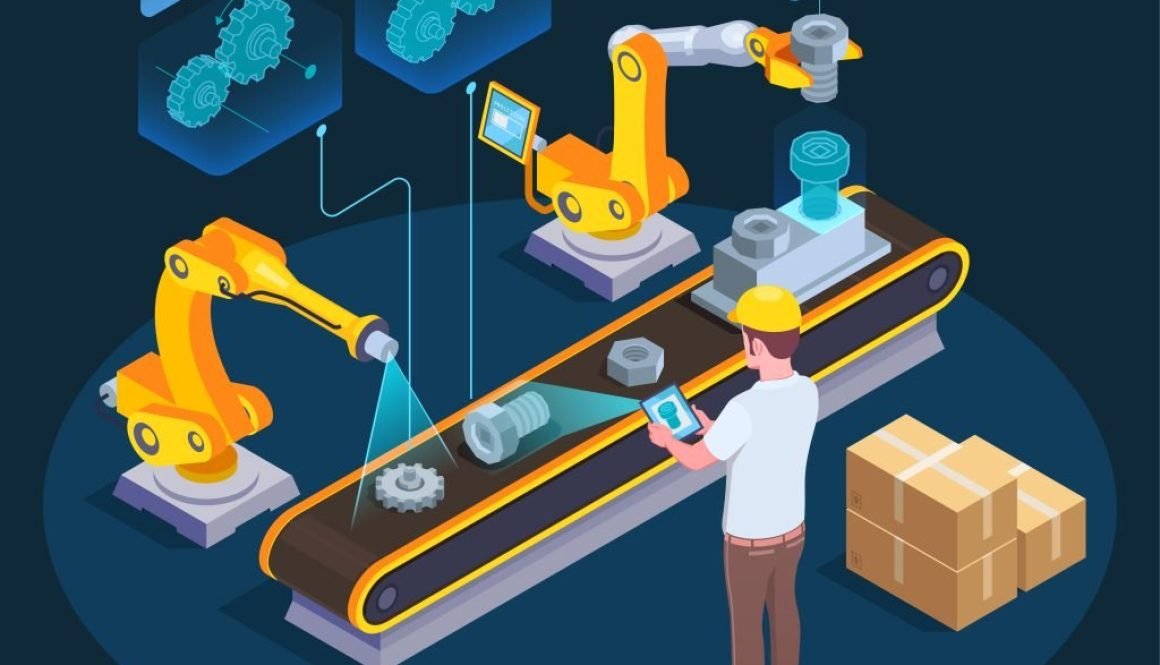Top 3 Manufacturing Technology Trends
Macroeconomic and microeconomic developments test the resilience of the manufacturing sector each year. Some of these disruptors are the COVID-19 pandemic, increasing inflation, supply chain disruption and labour market shortages – all of which proved challenging for manufacturing and steel fabrication businesses. As a result, there is an increased sense of urgency to strengthen and streamline manufacturing processes as the sector will get tested further in an environment of increased uncertainty and volatility. There are some upcoming technology trends which can help manufacturers grow and overcome industry challenges – this blog will deep-dive into this topic to provide further insight.
Power of Cloud

The adoption of cloud technology by manufacturers is accelerating, especially with regard to the rapid growth in adoption of IIoT. A recent survey revealed that 90% of manufacturers plan on moving to the cloud. Despite this, there are manufacturers still reliant on outdated and unstable technology, restricting growth, innovation, and competitiveness. Cloud solutions enable companies to integrate every aspect of their process seamlessly. Having data available on a unified platform provides visibility over the whole production journey. This integration and ability to monitor processes in real-time not only enhances operations, but provides insights to streamline production, cut costs, and enable data-driven decisions. Migrating to the cloud is already reaping rewards for manufacturers who have made the change. However, as the global economy continues to create turbulence and uncertainty, laggard businesses must consider investing in the right cloud solutions to help them consolidate and connect – otherwise, they risk being left behind.
True Value of Data

Data is core to manufacturing and has become central to digitalization strategies and can be used to identify changes in customer behaviour, supply chain issues, and production or labour trends. Managing data as a valuable business asset is also important in securing critical control points for manufacturing companies as it can be used to make an analysis that would give insights into various aspects of the industry. A recent survey by the World Economic Forum revealed insufficient skills are the biggest challenge to capturing value from manufacturing data. In this context, there is expected to be an increase in hiring and valuing digital natives who understand analytics and can adopt a data-driven approach.
Rise of Automation and Intelligent Integrations

There is expected to be an increase in reliance on digital work instructions and intelligent integrations. Industry 4.0 is a digital transformation that connects manufacturing through “smart” technologies like Blockchain, Internet of Things and Artificial Intelligence. It aids in revolutionizing modern-day manufacturing by giving an in-depth understanding of product design and process, and by accommodating experimentation. For instance, Epicor Connected Process Control, formerly known as eFlex Systems, a provider of cloud-based Manufacturing Execution System (MES) technologies recently acquired by Epicor, helps manufacturers to increase productivity by modernizing their production environments through digital work instructions, advanced process control, and real-time visibility in processes such as heat induction bending services. Although the global economic outlook remains uncertain, the manufacturing industry recognizes the disruptive effect of automation as key to becoming more competitive, increasing growth, and improving profitability.
Conclusion

Even as Industry 4.0 continues to help businesses, it is paving the way for Industry 5.0. Still in its nascent stages, Industry 5.0 is advancing the collaboration between humans and machines as a response to increased customization in products. So, technological innovation and collaboration is expected to continue at an increased rate and this is likely to be a recipe of success for manufacturers who are ahead of the curve. In essence, volatility needs to be countered with proactiveness – this can help manufacturers outperform their counterparts in an increasingly competitive world!

